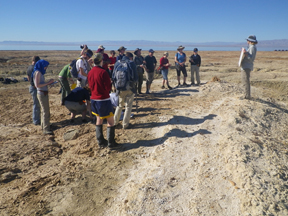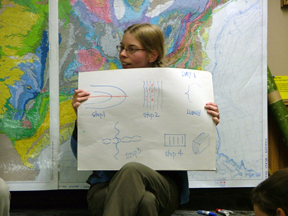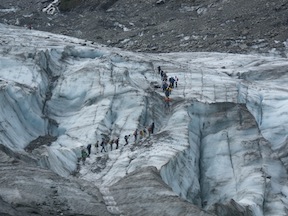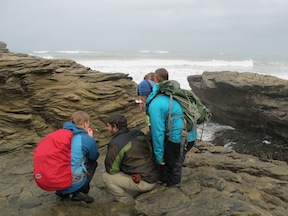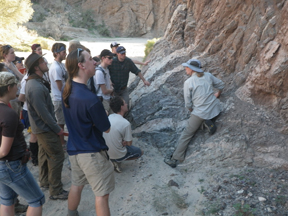Teaching
Geology 100: Geology in the Field
Fall 2014This Argument and Inquiry (A&I) seminar is designed for first-year students. The course meets twice a week and involves many outdoor experiences. Students gain a good grounding on what it means to be a geologist while learning about the geologic history of southeast Minnesota.
Geology 110: Introduction to Geology
Spring 2019Spring 2024 Moodle
In this course, we'll learn about the large-scale structure of the Earth, formation of mountains, explosive processes like volcanoes, earthquakes, and how water, glaciers, and mass wasting can shape the landscape. Weekly laboratory exercises focus on understanding the geology of southeastern Minnesota.
Geology 130: Geology of National Parks
Winter 2022 (Moodle)This Introductory Geology course focuses on tectonics, natural hazards, and landscape development. Examples are drawn from National Parks. A mid-term break field trip to Death Valley will provide a hands-on experience of geology in the field.
Geology 220: Tectonics
Fall 2024Plate tectonic theory gained widespread acceptance in the earth science community less than 40 years ago. We will explore topics related to this important theory such as the structure of the Earth, earthquake analysis and prediction, the creation and destruction of the ocean floor, and the location and style of mountain building across the globe. Weekly writing assignments focused on a particular tectonic plate, homework exercises, and a group laboratory project are required.
Geology 240: Geophysics
Spring 2017Co-taught with Bill Titus Our goal in this class is to use a variety of geophysical methods - gravity, magnetics, and seismology - to image the Earth's subsurface structure. These approaches are not just useful for answering geologic questions, but can be applied outside geology to find artifacts at archeological sites or to manage clean-up at Superfund sites. This particular geophysics course is a bit special - it's taught by a geologist and a physicist and, gasp, they're related.
Geology 287/288: Geology of the South Island
Winter 2018Students will have the opportunity to hone their field observations skills through a series of mapping projects and tectonic reconstructions in the South Island of New Zealand. Kiwi experts will travel with us throughout the island, visiting sites such as Cass, Kaikoura, Westport, and the west coast of the South Island.
Geology 365: Structural Geology
Winter 2024Structural geology involves the study rock deformation at scales ranging from the collision of continents all the way down to the movement of individual atoms within crystals. In this course, we'll discuss many types of geologic structures (e.g. faults, folds) and how they are typically interpreted by structural geologists. The term-long focus is on understanding the San Andreas fault system using the primary literature. As part of this project, students will discuss articles, give talks, and prepare a paper about some aspect of the fault system.
